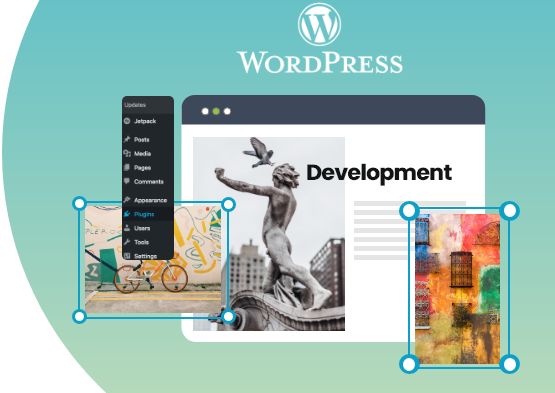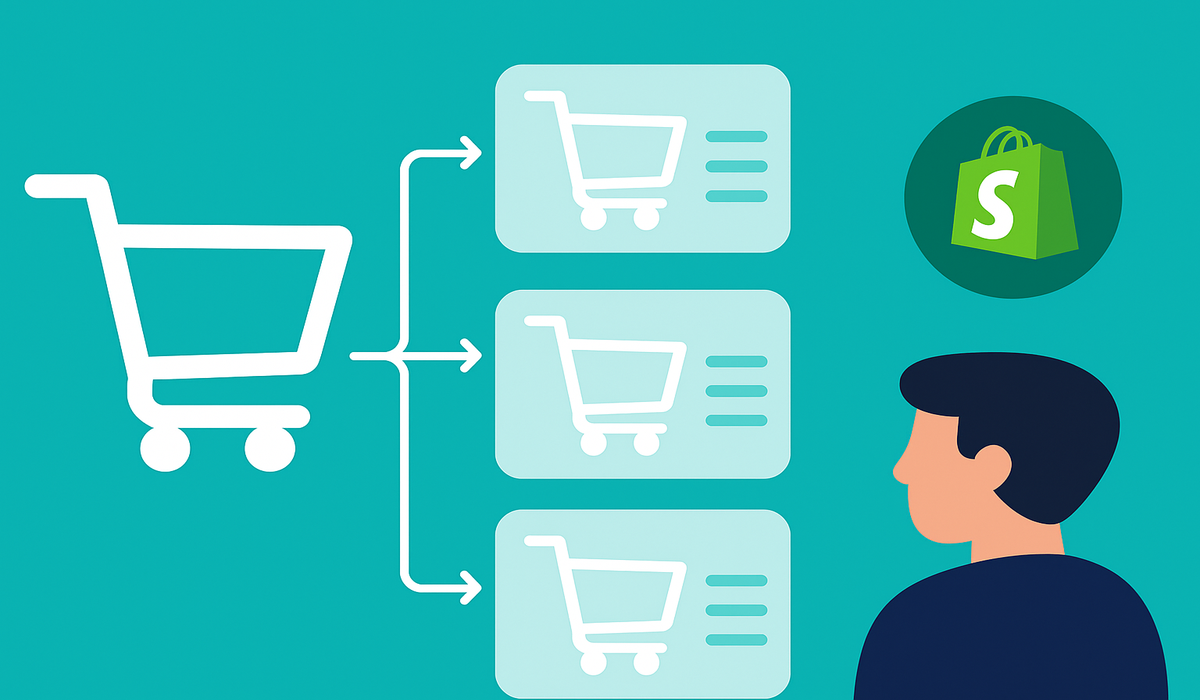Shopify vs BigCommerce
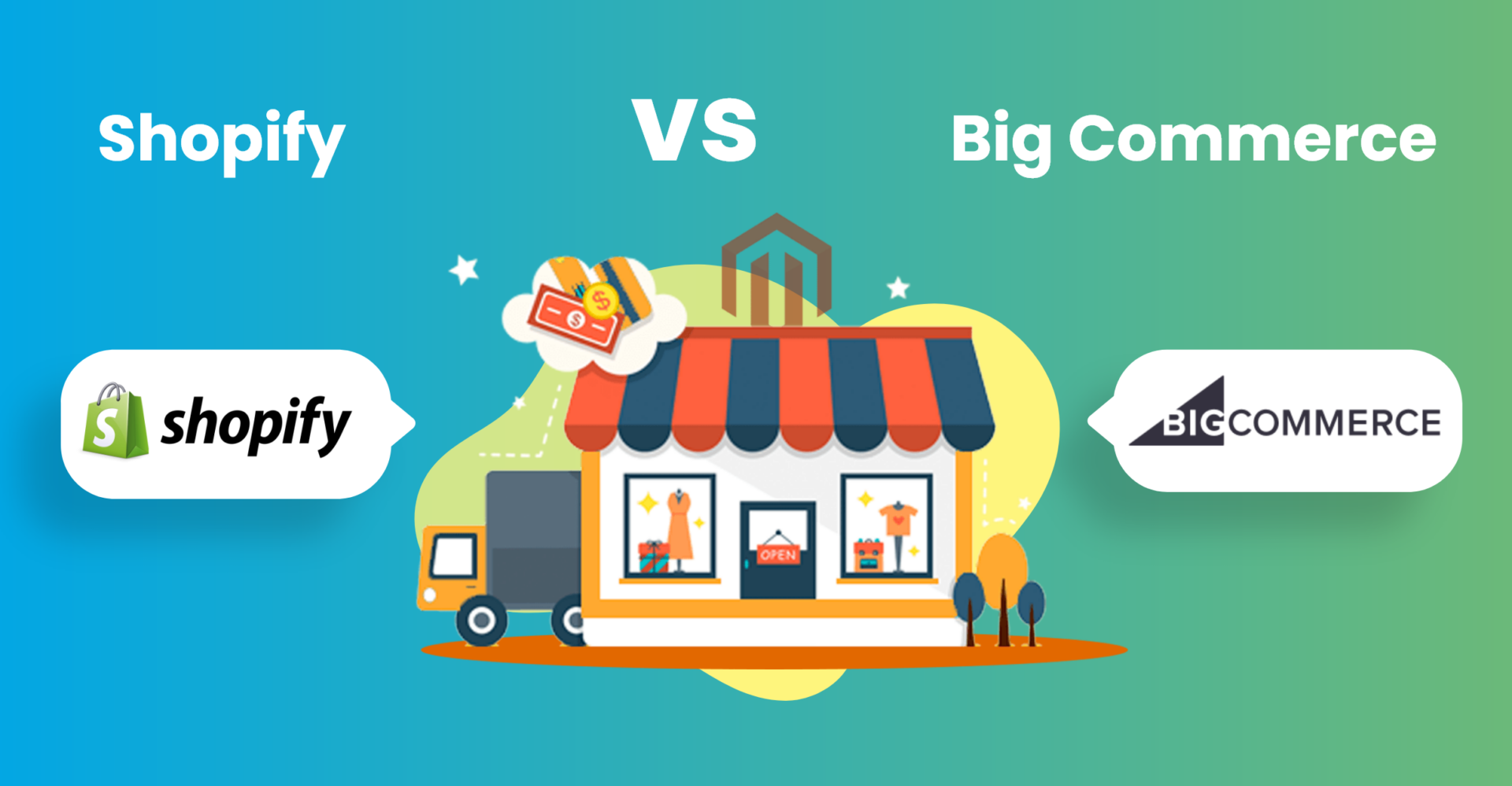
Starting up an eCommerce store? Congrats!
But wait up! Before you start implementing your plan into action, you’ll be faced with a question.
Which eCommerce platform should I pick?
During your research, you’ll obviously encounter many prominent eCommerce platforms. Primary among them would be BigCommerce and Shopify. If you’ve set your sights on the two platforms, you might be stuck on another question.
Should I pick BigCommerce over Shopify? Or the other way around?
Well first off, it depends on the type of store you want to create. To find out which platform adds more value to your vision, you need to compare the platforms with each other. Fortunately for you, we’ve solved that problem.
This article is written as a definitive guide comparing BigCommerce and Shopify. We hope that by the end of this article, you’ll have a solid grasp on both the platforms. Moreover, you’ll be able to decide which one you should opt for.
Note: If you’re a beginner looking to start an eCommerce business, this primer on the essential features of an eCommerce store might prove helpful.
So, let’s begin!
BigCommerce vs Shopify: A Brief History
Besides these two, there are plenty of other high-quality eCommerce platforms.
So why did we pick BigCommerce and Shopify? We could have compared Shopify and WooCommerce.
Well, the answer is pretty straightforward. Among the fray of platforms available, Shopify and BigCommerce are undoubtedly industry leaders. Their features, pricing, and functionalities are intended to be user-friendly to all types of store owners.

A Canadian company founded in 2006, Shopify’s success story runs in tandem with the growth of the eCommerce sphere in the past decade.
With over 600,000 active retailers, it’s now one of the few goliaths of the eCommerce industry that owners love and adore. 
Compared to Shopify, BigCommerce is on the younger side. An Australian company founded in 2009, the company has, like its competitor, capitalized on the growth of the eCommerce market. Currently serving over 100,000 stores worldwide, it’s a platform that’s guaranteed to help you succeed in the online world.
Here’s a Google Trends comparison between the two platforms. 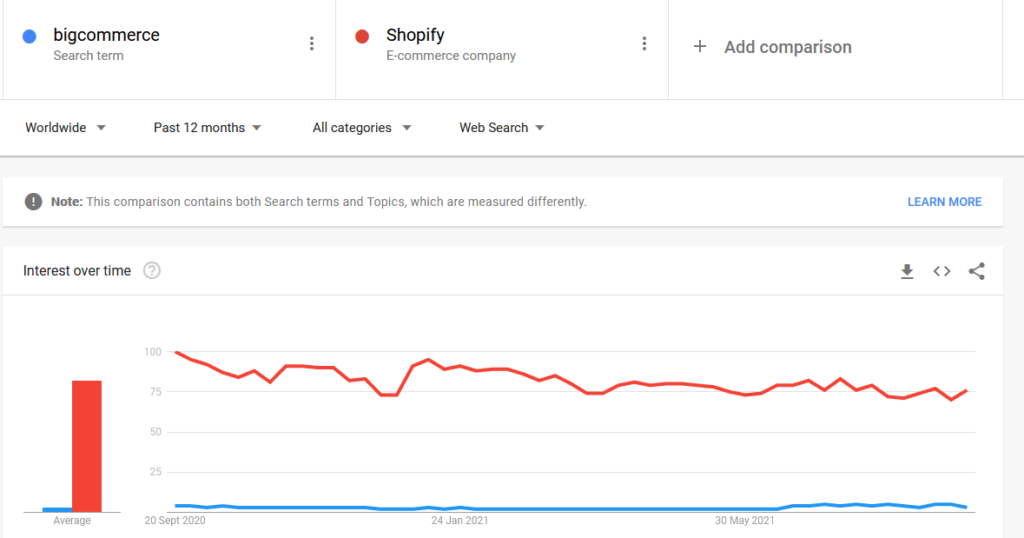
If you’re in a bit of a hurry, you might be tempted to select Shopify over BigCommerce.
Not so fast! Yes, by all indications Shopify does tower over BigCommerce but at the end of the day, both of them are growing at their own pace. BigCommerce enjoys its fair-share of audience just like Shopify and their users are satisfied with what they can get.
After speaking of the past, we now come to the present. Let’s go to an in-depth comparison between the two platforms.
BigCommerce vs Shopify: Pricing
We begin our discussion with the most important factor of all: pricing.
A product can be the best product out there, but if its pricing doesn’t meet your budget, what’s the point of having it in the first place?
Luckily, with BigCommerce and Shopify, you can find a platform that suits your budget perfectly. It comes with loads of plans that you can select depending on the type of operations you’re looking to run. Let’s look at Shopify Basic and BigCommerce Standard. Both of these plans offer virtually the same number of features. On Shopify, however, you’re limited to the number of staff accounts you can create; a total opposite of BigCommerce.
The illustration above clearly shows that whether you take BigCommerce Standard or Shopify Basic, you’re getting the same features in terms of bandwidth, storage, customer support, and the number of products.
WordPress Development
Over 1000 projects delivered using WordPress,
the most popular CMS in the World!
Now, let’s look at the more advanced plans and compare Shopify and BigCommerce.
Neither Shopify nor WooCommerce builds upon the advanced version from their basic plans. That said, if you’re going to jump directly to an advanced version, you won’t notice the difference even if it’s there.
Here’s what you’re getting with the advanced plans:
- On Shopify, the upgrade provides you with gift cards and better analytics in the form of reporting tools.
- On BigCommerce, you’re getting a bit more with the ability to create customer groups and segment them. Additionally, you’re also getting a variety of tools like “abandoned cart saver,” among other things.
All the advanced features provided by these platforms are indeed powerful, but they’re not something you’d want if you’re just a beginner.
Another important factor to look at here are the transaction fees. When comparing Shopify and BigCommerce, both don’t charge any transaction fees per se. However, they do take a 2.2% to 2.9% + 30c off of credit card processing fees.
As it stands, both platforms are generally the same. The only thing that differentiates Shopify from BigCommerce is Shopify offers a $9 per month plan. For users looking to get a feel for Shopify, this is a very good option.
Either way, both platforms provide free trials that you can test before committing to one.
BigCommerce vs Shopify: The Essential Features
Both of these platforms provide almost every set of features you can expect from an eCommerce store. Each one provides you with a specific set of features that add significant value to your store.
Whatever platform, whether Shopify or BigCommerce, you choose, we found that both the platforms offer the following functionalities:
- Unlimited Store Products
- Unlimited Disk Space
- Unlimited Orders
- Unlimited Bandwidth
- 24/7 Live Chat Support
- Multi-Functional Ecommerce Store
- Drag and Drop Website Builders
- “Point of Sale” Tools
- Mobile-Friendly Store UI
- Multiple Online Gateways
- Shipping Integrations
- Tax Calculators
- Credit Card Processing
- Customer Account Creation
- SEO Tools
- PCI-Compliant
- Free Security Certificates (SSL)
- Inventory Management Tools
- Sales Reporting Tools
- Analytics
Even if you go in-depth with the features of the two products, you will find that both of them are more or less the same.
In terms of innovations and adding new features, both platforms don’t lag behind. Both the companies ensure that their features are in-tune with the demands of the market and ensure that their products are in keeping with that demand.
But where Shopify does differ from BigCommerce lies in the fact that it’s a lot more friendly to multilingual users. As an additional feature, it also provides useful tools for dropshipping.
Moreover, it has an extensive range of marketing tools that help you go the distance. Using these tools and reading up on Shopify’s knowledge-base, you can learn how to promote your Shopify store, increase traffic and revenue.
Similarly, BigCommerce focuses significantly on security and provides protection against DDOS attacks with multi-layered security for your hosting account. Additionally, they also make it easy to place items on product comparison websites.
BigCommerce vs Shopify: Design and User Experience
No eCommerce store, or in fact, a website can look good without good web design. Themes play an integral role in ensuring an efficient design and UX.
Let’s compare the two platforms alongside each other. Only this time, we’ll be comparing them based on design and the user experience they provide.
Let’s begin with Shopify. There are over 100 themes that you can choose from, both ranging from free to paid. Best of all, they’re all in-tune with the modern website aesthetic that we see today.
Shopify has a separate section for themes. Within that section, there are plenty of sub-sections. Depending on your niche, you can select the sub-section of your store and download a theme from there.
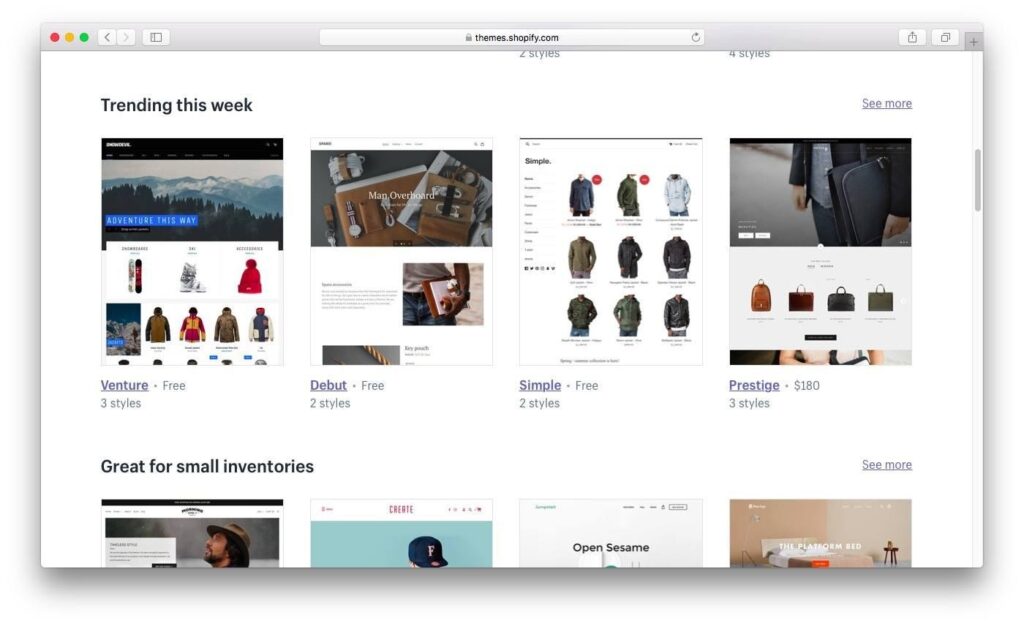
Shopify’s community, consisting of both premium and third-party theme developers have contributed significantly to making Shopify’s theme store to what it is today. Highly-functional, SEO-tested, and overall impressive, these themes are the backbone of the modern Shopify store.

You don’t have to take Shopify’s word for it. The user-reviews and the websites themselves are an indication of how satisfied Shopify’s users actually are. There are plenty of resources for new users to gain more information on how to maximize their usage of Shopify. On the other hand, there are users who are familiar with Content Management Systems (CMS) like WordPress, who feel right at home with the product.
To illustrate, here’s what the main Shopify dashboard looks like:
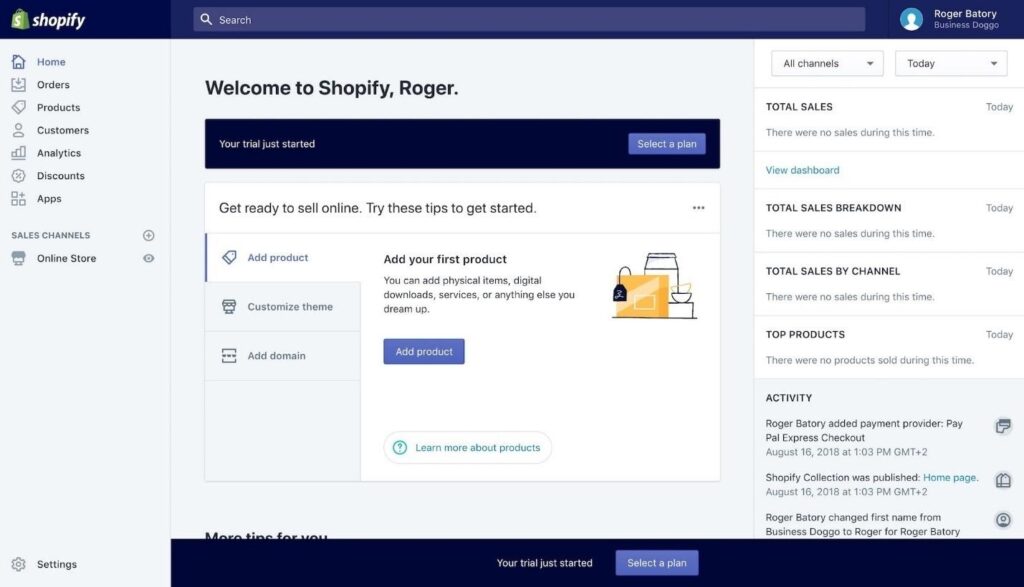
The following is the UI when you’re adding a new product:
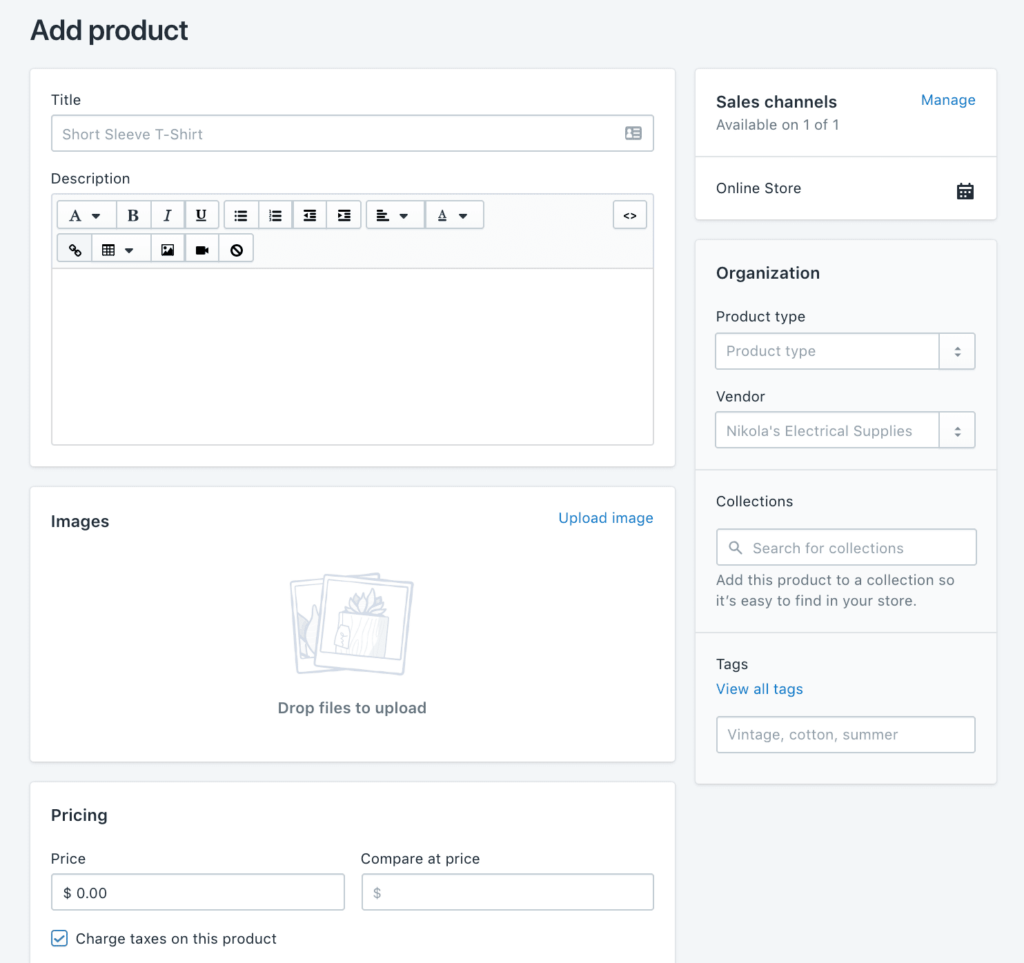
Now, let’s talk about BigCommerce.
BigCommerce is no pushover when it comes to design and UX. Unlike Shopify, which utilizes existing tools, BigCommerce has taken a rather unique approach towards its interface. For those looking for a customizable and advanced solution, and are willing to learn can benefit from BigCommerce.
Let’s look at the main dashboard in BigCommerce:

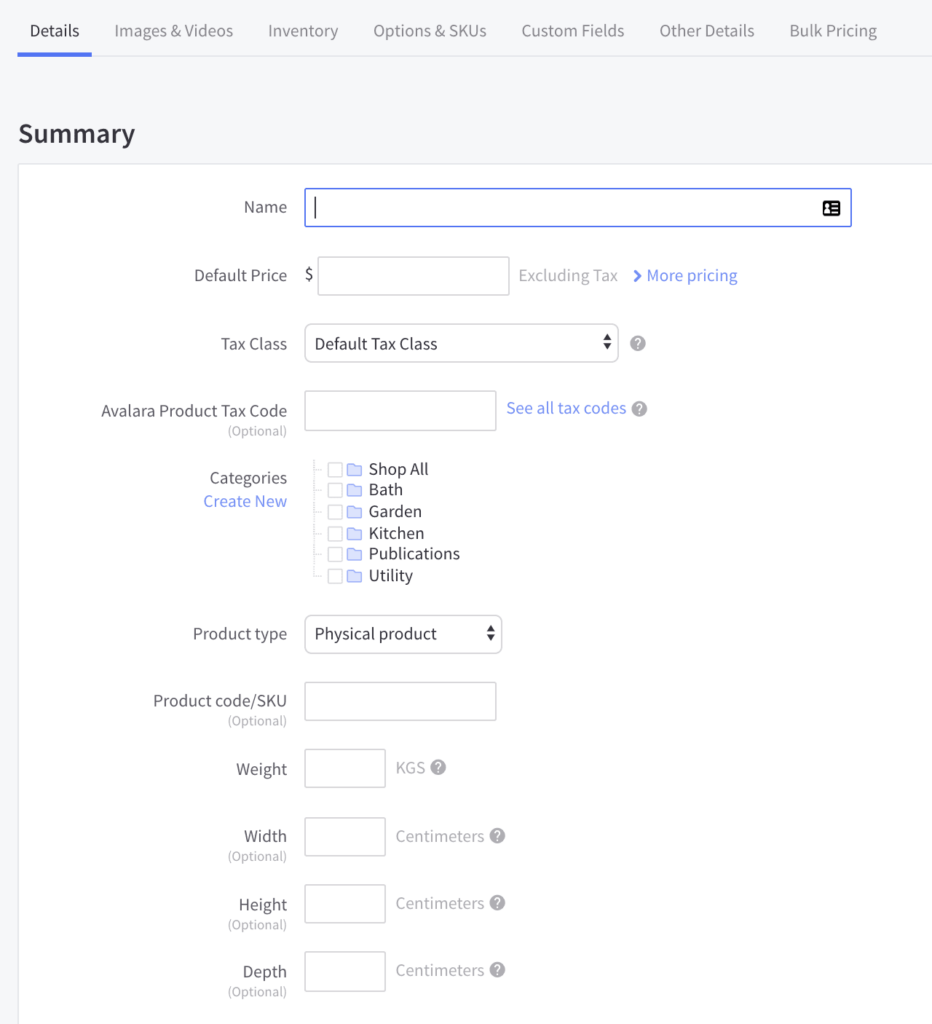
Very aesthetic if we do say so ourselves.
When it comes to themes, BigCommerce does not differ much from Shopify. Including a wide range of free and paid themes, categorized to niche preferences, these themes are highly functional and customizable.
The paid themes, as it stands, have costs equivalent to Shopify themes. That said, you will also find premium themes with tons of features ranging at about $300 or more.

BigCommerce vs Shopify: Plugins and Extensions
Both the platforms are very intuitive when it comes to providing features and functionalities right out of the box.
But what if you wanted a specific functionality that isn’t pre-packaged? Well, extensions for both the platforms offer that solution.
Let’s look at the Shopify App Store.
With over 500 in-house and third-party extensions available, you can add just about any functionality you want on your store.
From Conversion Rate Optimization (CRO) tools, to SEO, digital marketing, social media, customer support tools, and more. When it comes to extensions, Shopify has an extension for everything.

BigCommerce is similar to Shopify in this regard. It has a wide range of extensions for multiple use-cases and purposes. Ranging from free to paid themes, these add significant value to your eCommerce operations.
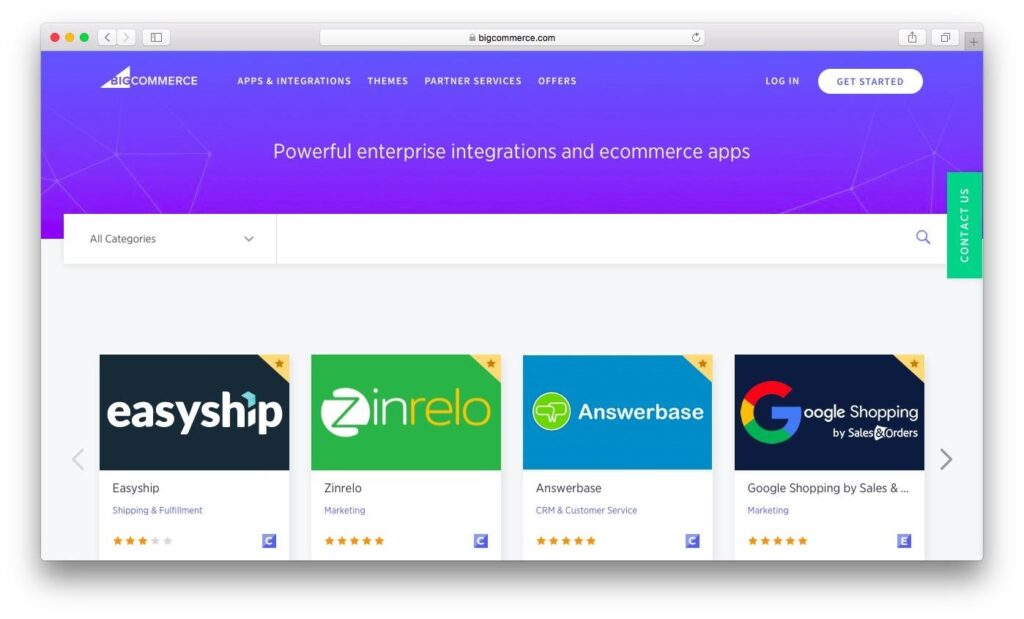
Even though BigCommerce is similar to Shopify, it’s collection of plugins is a lot less rich than that of Shopify.
Let’s Talk
Optimize your digital presence and grow your business with us
BigCommerce vs Shopify: Which is better?
You might have noticed that both the platforms are eerily similar to each other. With that in mind, we’ll attempt to answer the question posed in the introduction.
Shopify or BigCommerce: Who wins?
Without picking aside, we’ll say that they’re essentially the same. Depending on your choice, there is not much a difference when it comes to features—however, the way in how those features are delivered matters.
Shopify’s delivery is pretty straightforward. It mixes up third-parties and in-house developers to offer an easy to use experience for beginners and advanced users.
BigCommerce, however, gives you plenty of advanced features to work with. If you’re a user looking to perform customizations without looking at the App Store for solutions every time, then BigCommerce is your solution.
We hope you liked this comparison on BigCommerce vs Shopify.
Here at codup.co, we offer eCommerce solutions to build extensions and perform customizations for a variety of different platforms. Click here to get a free consultation today!
Read Also

Fahad Sheikh
Fahad leads Codup on the marketing, growth, and product fronts. With over 12 years of experience in the tech and marketing industries, he likes to share his experiences and learnings with everyone. Fahad likes to read books, spend quality time with his family, and play and watch football.
